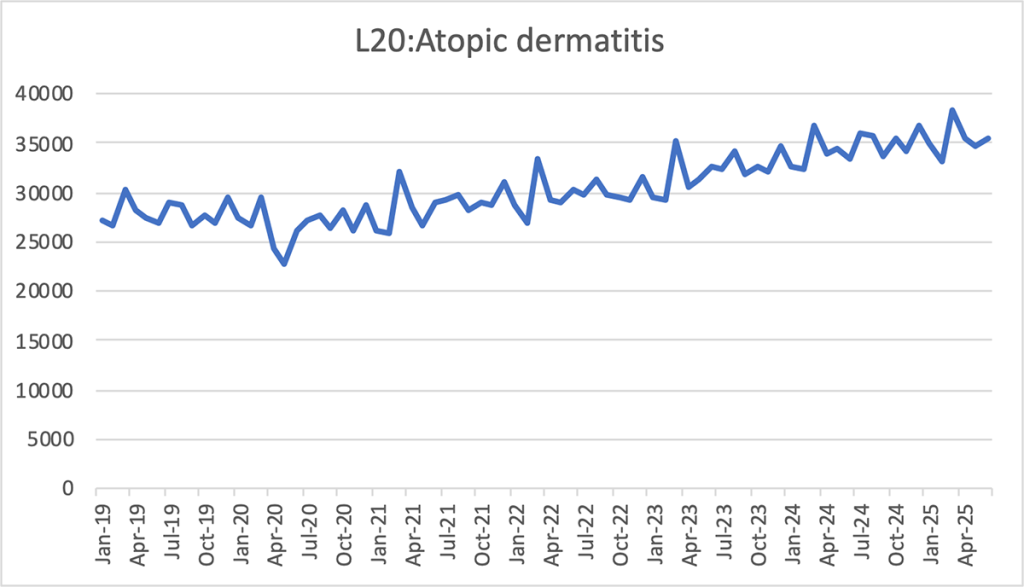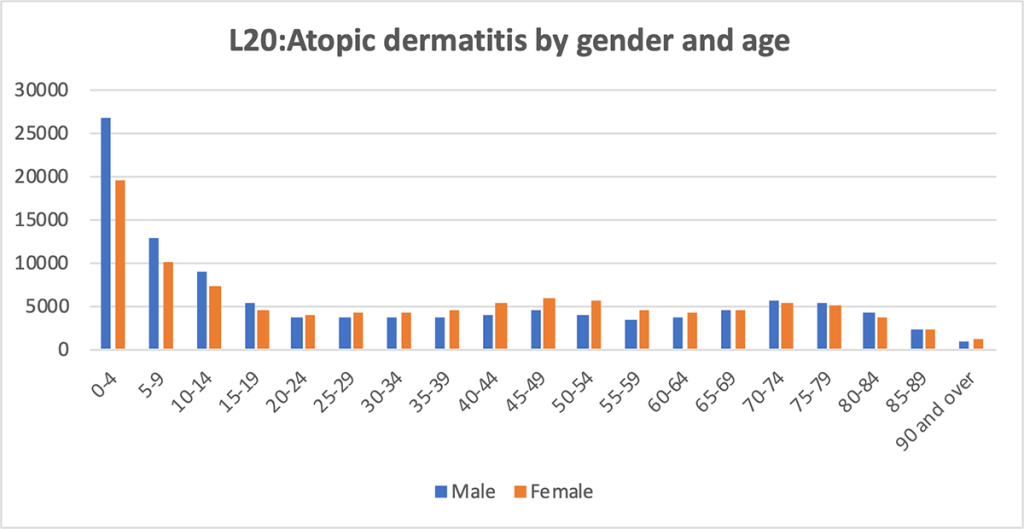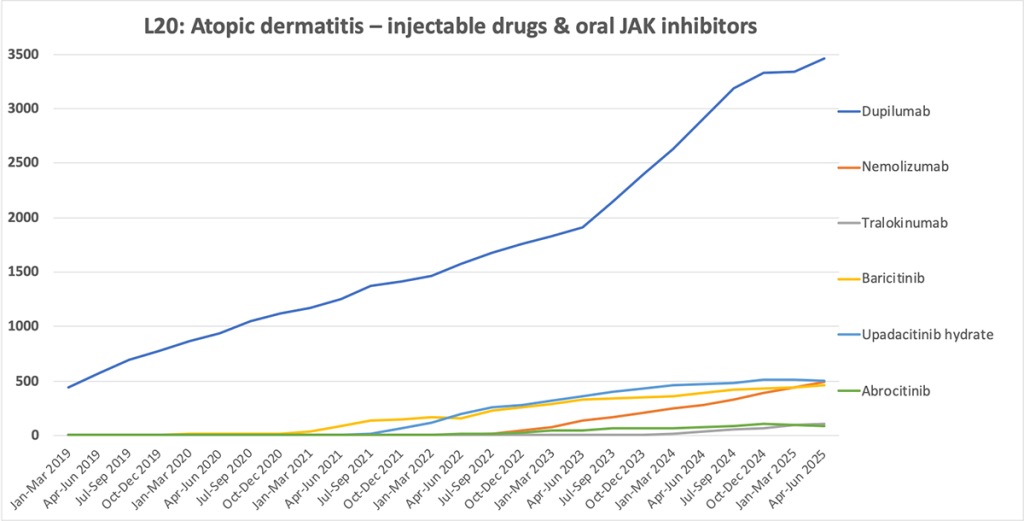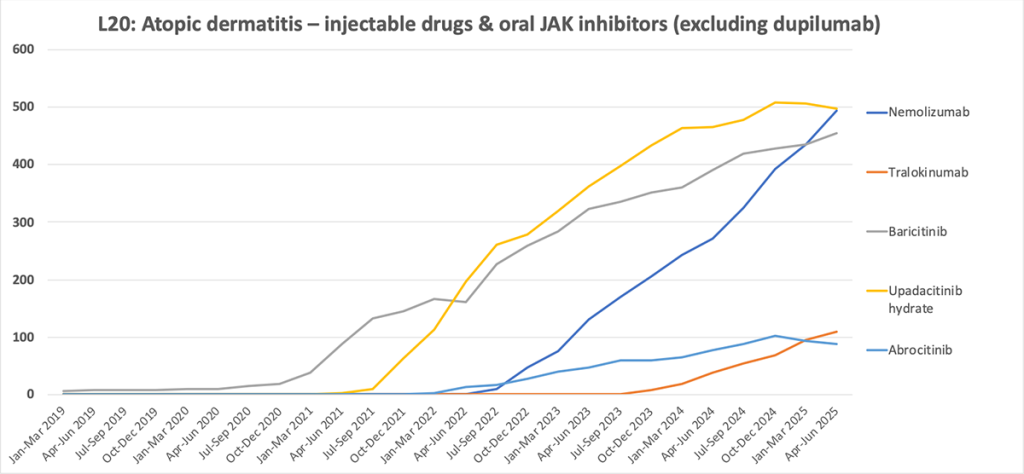
Trends in Patient Numbers and Prescriptions for Treatments in Moderate to Severe Atopic Dermatitis
Atopic dermatitis is a chronic skin disease in which itchy eczema repeatedly appears. It affects many people regardless of age or season. Causes include irritation of the skin from sweat, reduced skin barrier function due to ultraviolet light, and the effects of a hot and humid environment. Indoors, dryness from air conditioning is also a factor that can worsen symptoms. When such environmental factors overlap, inflammation and itching of the skin are more likely to occur, and symptoms may easily become aggravated.
In October 2024, the Japanese Dermatological Association released the Atopic Dermatitis Treatment Guidelines 2024. This was the first revision in three years, and it includes recommendations for newly developed drugs for atopic dermatitis. The appropriate use of these medications has become a topic of discussion.
Using MDV data, we examined the following:
- Trends in patient numbers (overall and monthly)
- Breakdown by gender and age
- Trends in the number of patients prescribed injectable drugs for atopic dermatitis
- Trends in the number of patients prescribed oral JAK inhibitors
Data coverage period: January 2019 – June 2025
Facilities included: Hospitals with complete data for all specified months
Number of facilities included: 257
Trends in Patient Numbers

From 2019 to 2025, the overall number of patients showed a gradual increase.

By age group, the highest number was seen among children aged 0–4, with particularly high numbers among boys. As age increased to 5–9 years and 10–14 years, patient numbers declined sharply, and dropped further after age 15. In adults, the difference between men and women was small, with patient numbers at almost the same level. The data also showed a steady number of patients among older age groups, including those in their 60s and above. This indicates that atopic dermatitis is a condition seen across all age groups.
Trends in Prescriptions: Injectable Drugs

Since its introduction in 2019, dupilumab has shown a consistent increase in the number of patients prescribed, with growth accelerating from 2023. The data suggest that it has become widely established as a standard treatment in clinical practice.
Other injectable drugs, such as nemolizumab and tralokinumab, have been introduced more recently. While the number of patients prescribed these drugs is still small, they show a steady upward trend, suggesting potential for future growth.
Trends in Prescriptions: Oral JAK Inhibitors

- Baricitinib was the first oral JAK inhibitor approved for atopic dermatitis in December 2020. Since then, the number of patients prescribed has steadily increased, and it is the only one among the three JAK inhibitors still showing growth into 2025.
- Upadacitinib was approved for atopic dermatitis in August 2021. Prescriptions increased rapidly after approval, surpassing baricitinib in April 2022. From October to December 2024, prescriptions exceeded 500 cases. However, since early 2025, numbers have shown a slight decline, and future trends will be worth watching.
- Abrocitinib was approved in December 2021 and has shown steady growth in prescriptions since its launch.
Summary
Overall, prescriptions for both injectable drugs and oral JAK inhibitors have been on the rise. This indicates that treatment for moderate to severe atopic dermatitis now offers multiple options, allowing physicians to meet the diverse needs of patients.
Note: This article was published on October 1, 2025.
Data survey and analysis tailored to your specific requests
Databases, data analysis requests, and more.
© Medical Data Vision Co., Ltd. All Rights Reserved.





